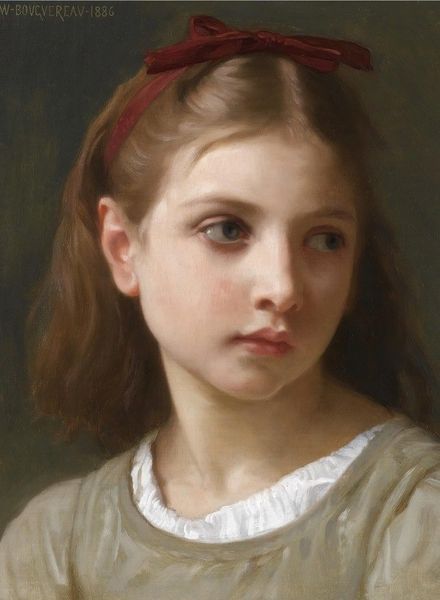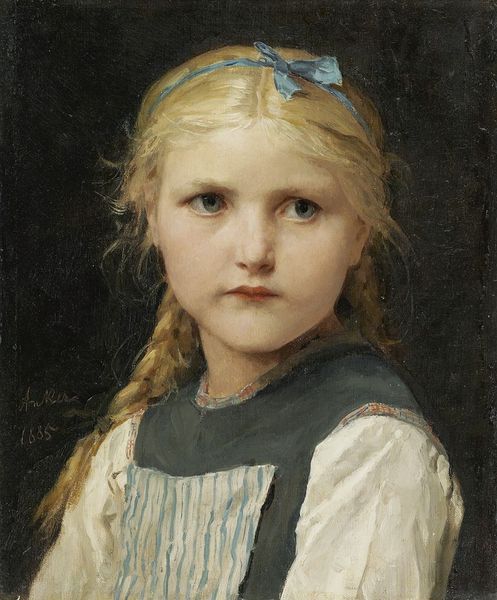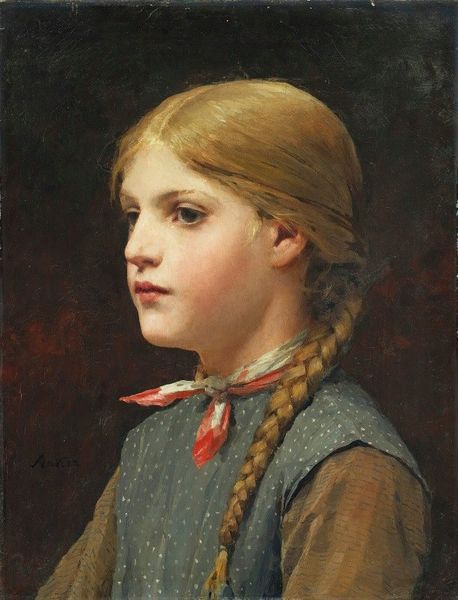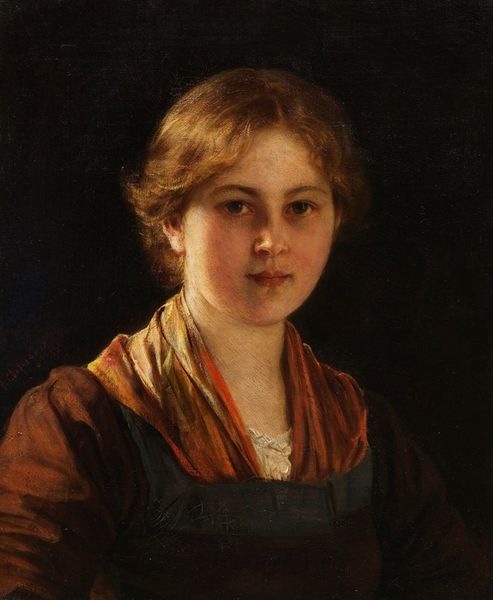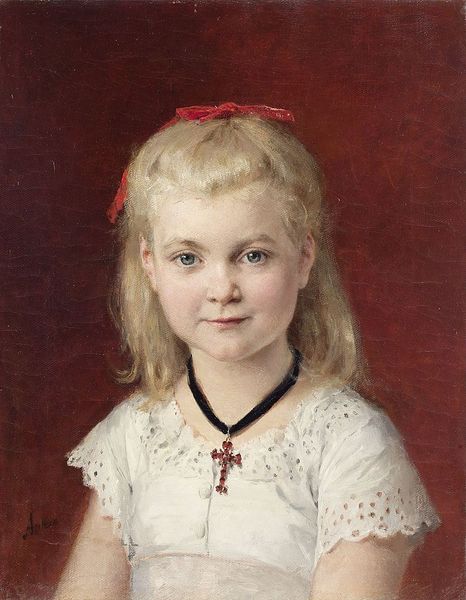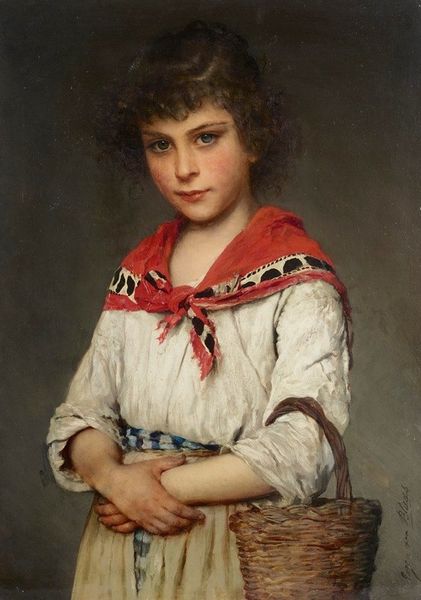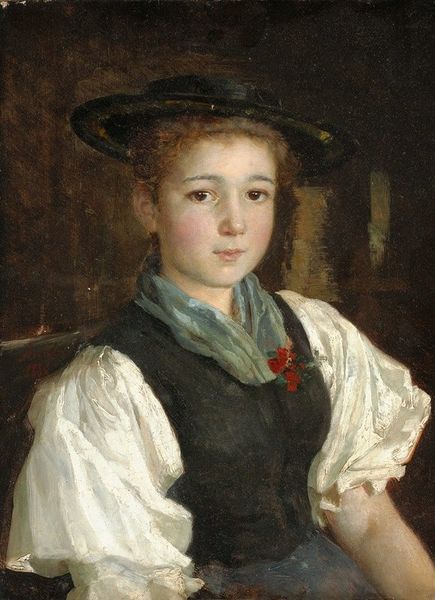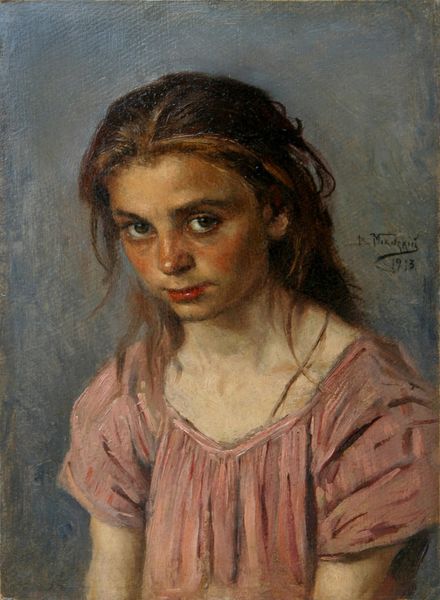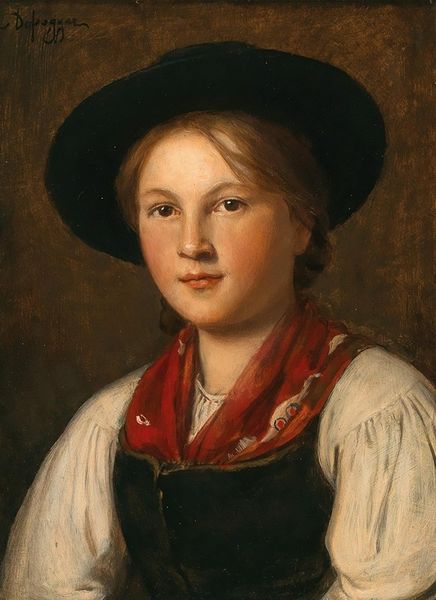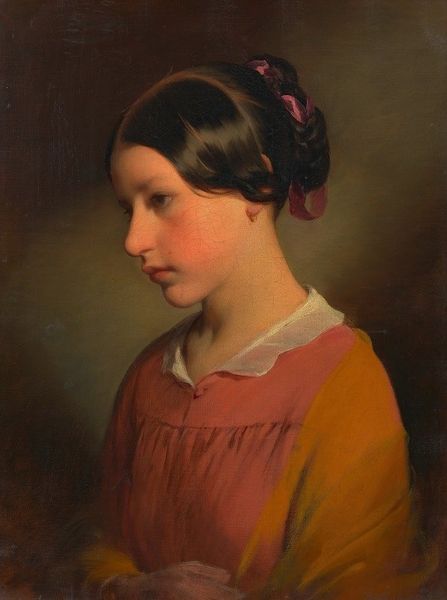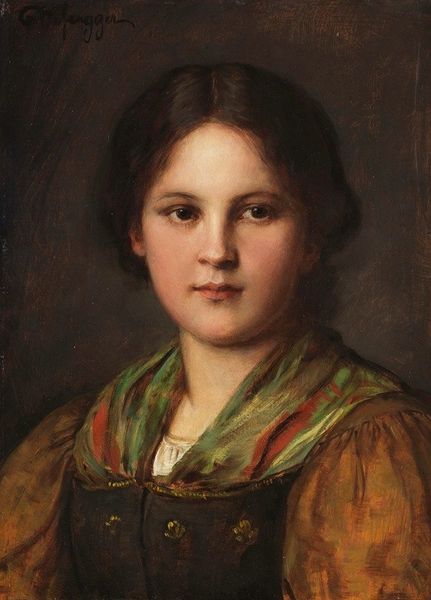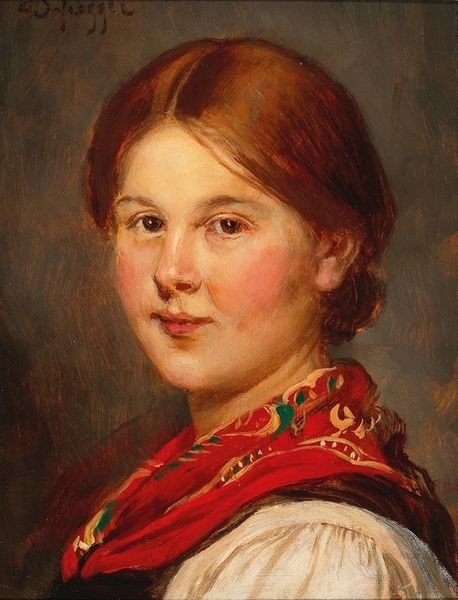
Copyright: Public Domain: Artvee
Editor: Here we have "Dirndl mit Kappe", an 1881 oil painting by Franz von Defregger. Looking at this portrait, I’m struck by how directly she engages the viewer. What structural elements contribute to this feeling of immediacy? Curator: The composition, first and foremost. Note the placement of the figure—almost entirely frontal and centrally located, providing a symmetrical balance that’s visually stable. This directs focus immediately to the facial features and contributes to the overall sensation of groundedness. Do you notice how the artist has structured the light? Editor: I see the light falls quite softly, almost exclusively on her face. The shadows are fairly muted and the background is plain. Curator: Precisely. Defregger emphasizes the play of light across her face, modeling her features to create a heightened sense of volume and form. Consider the application of pigment, as well. Broad, fluid strokes depict her clothing, in contrast to the smooth, almost porcelain finish of her skin. This contrast foregrounds texture while contributing depth and contour, drawing one’s eye to the smooth area and locking focus in the center. Editor: So, it is through a deliberate manipulation of composition, light, and brushwork that Defregger achieves this compelling portrait? Curator: Yes, each formal choice serves a distinct purpose within the larger visual structure, ultimately shaping our perception of the subject and engaging us directly with her presence. Did you notice how there’s tension between surface and depth as well? Editor: The painting seems simpler now, looking at the way the colours create different dimensions with shadow. Curator: Exactly.
Comments
No comments
Be the first to comment and join the conversation on the ultimate creative platform.
